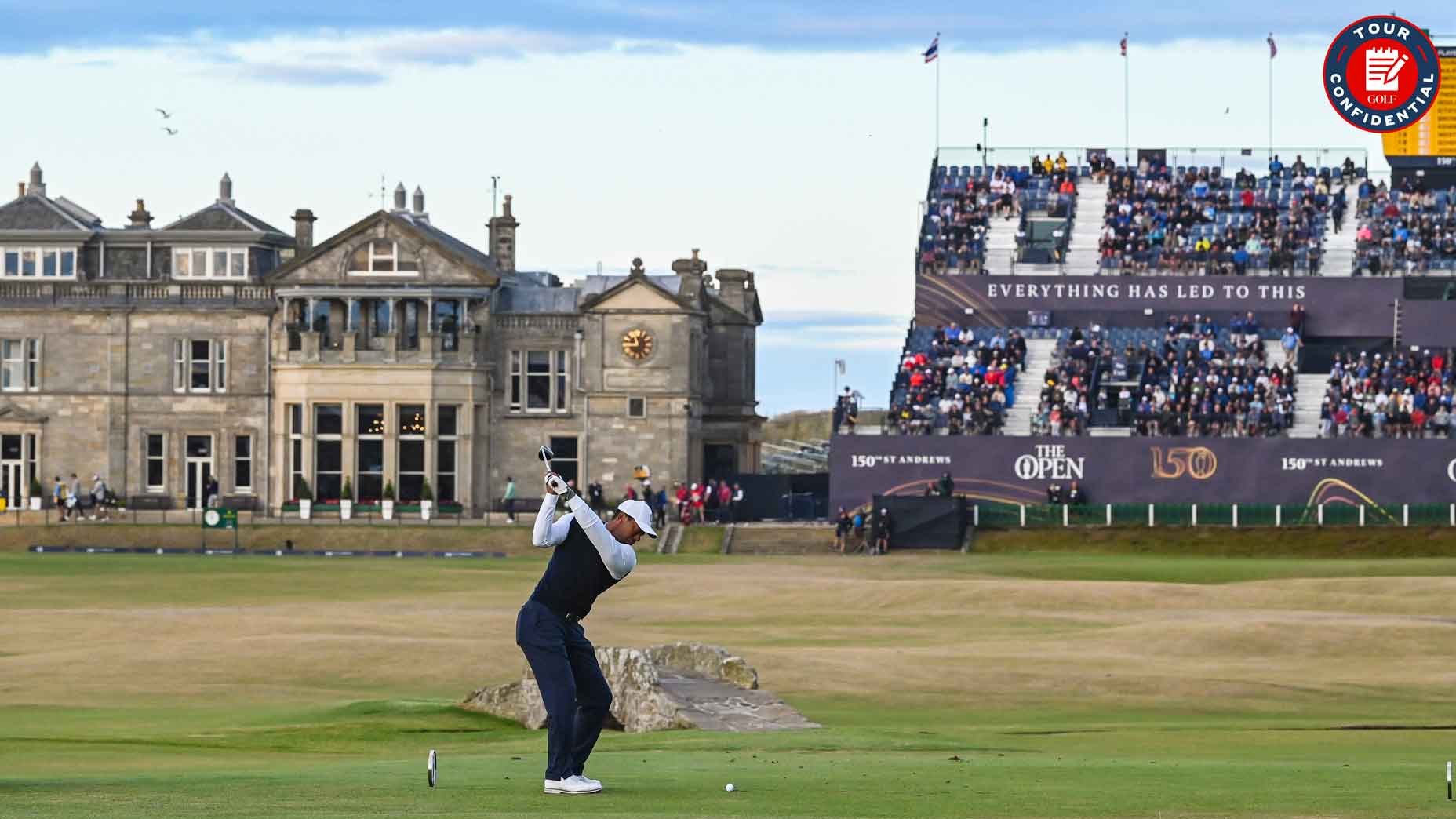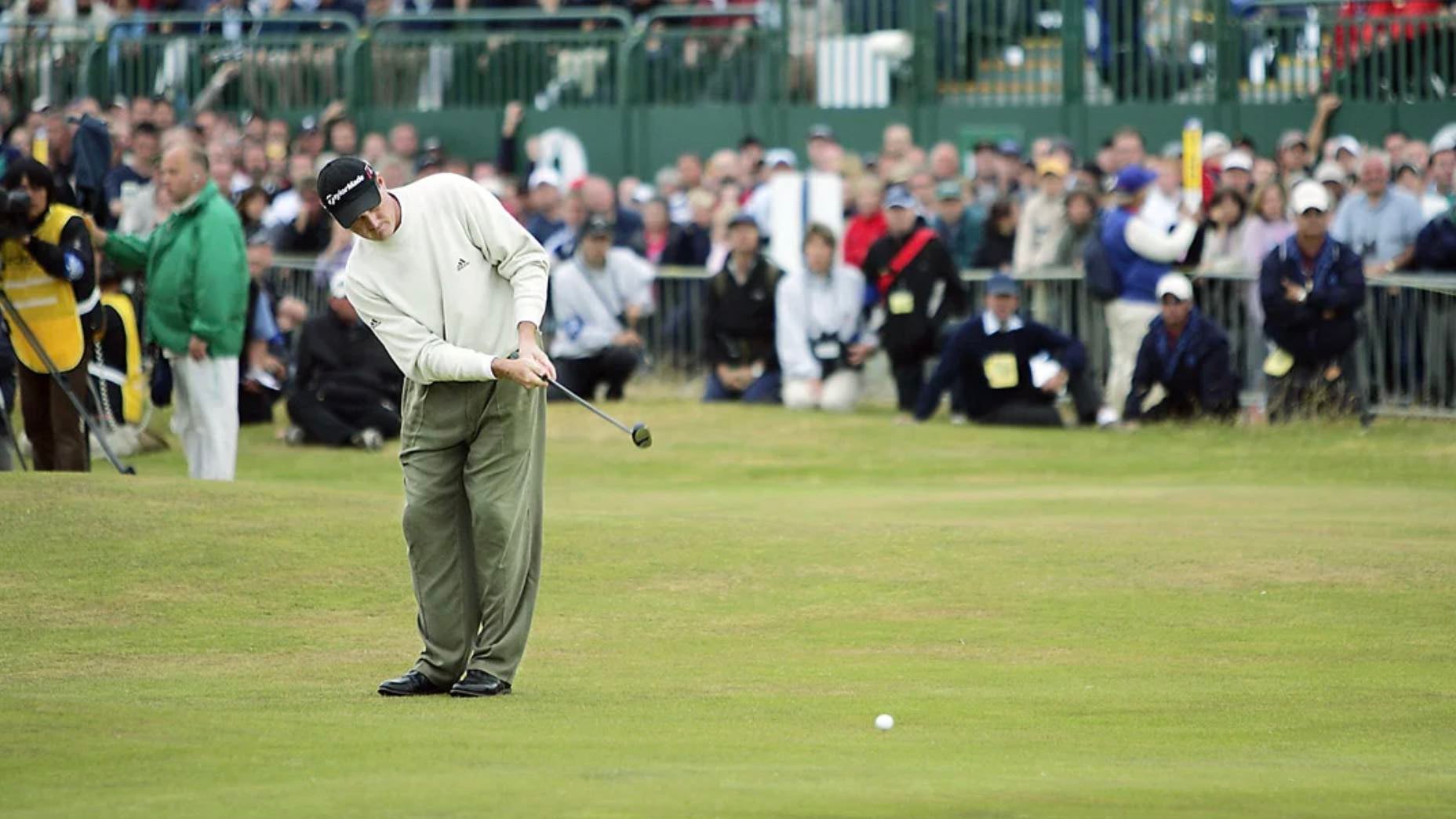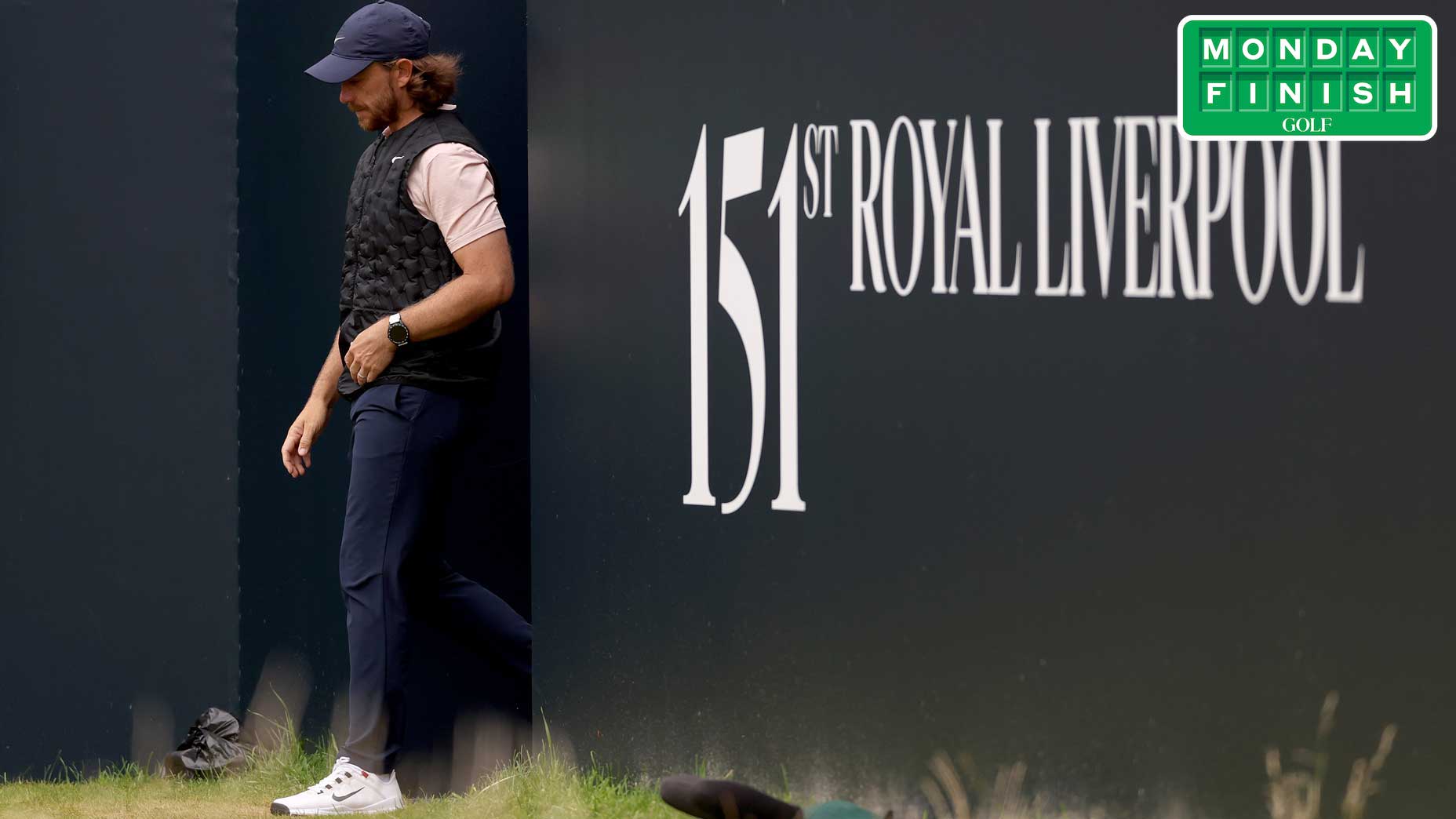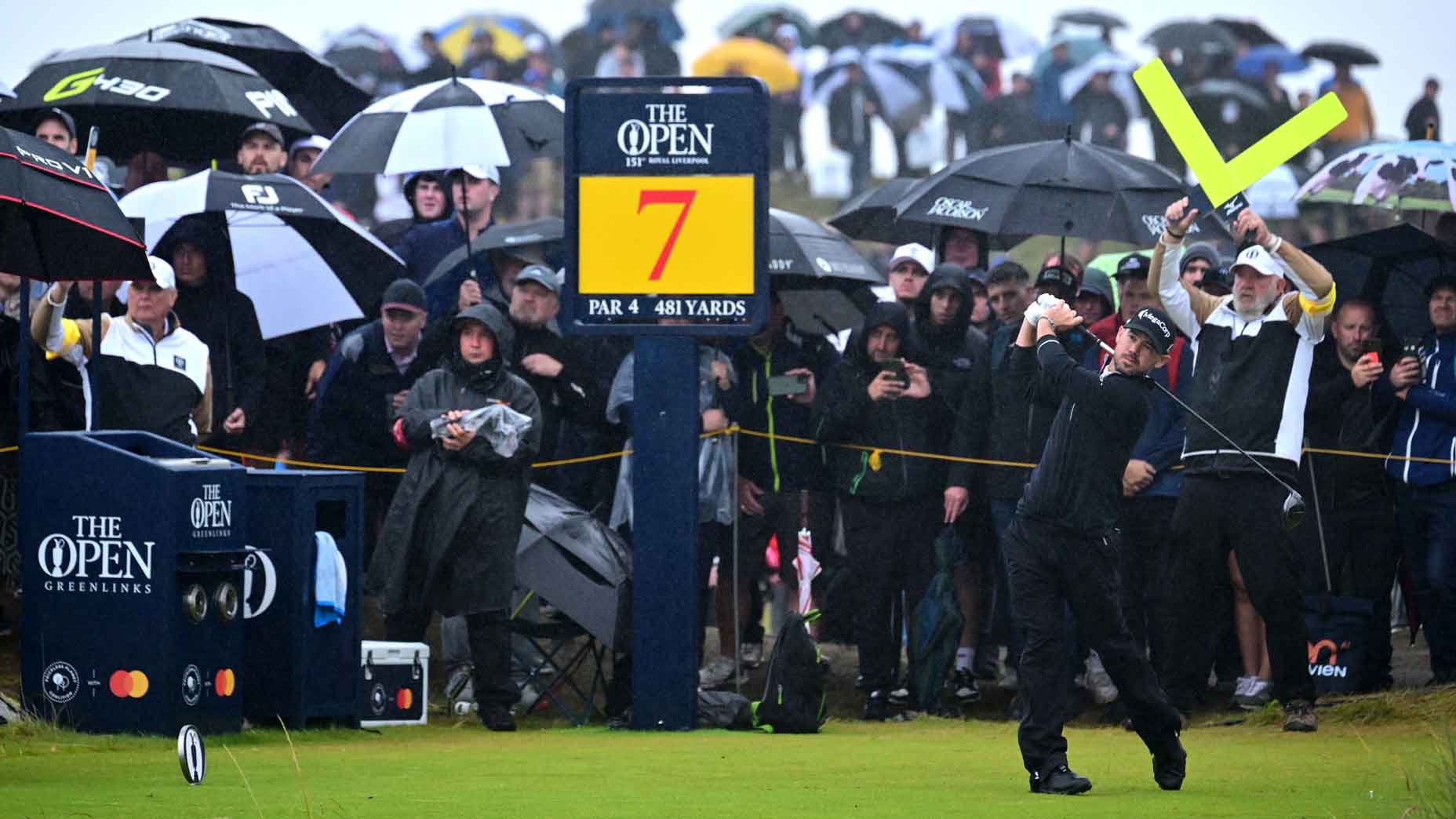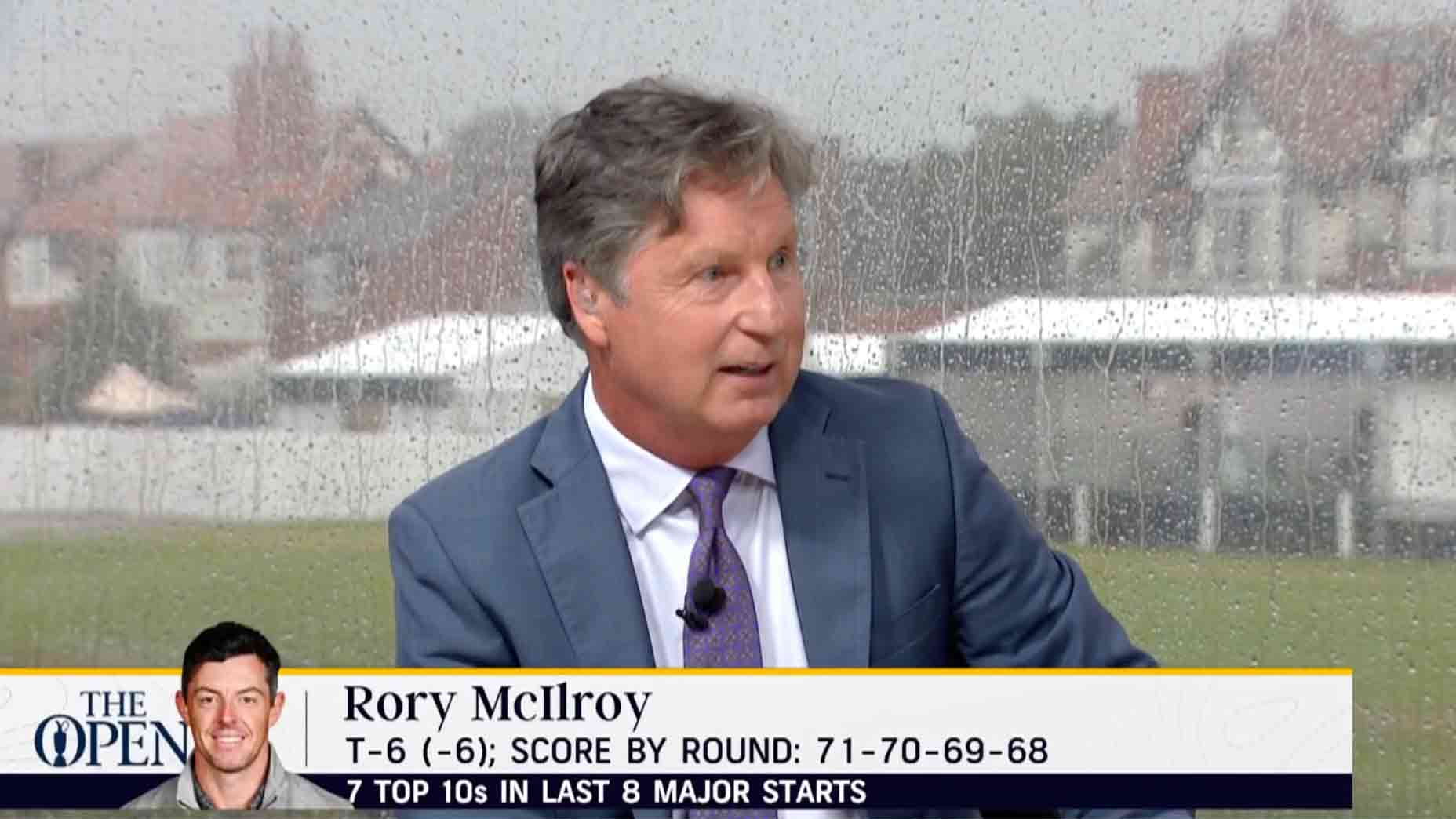‘It’s just a joke, isn’t it?’ Why Open rounds are taking 6 hours at St. Andrews
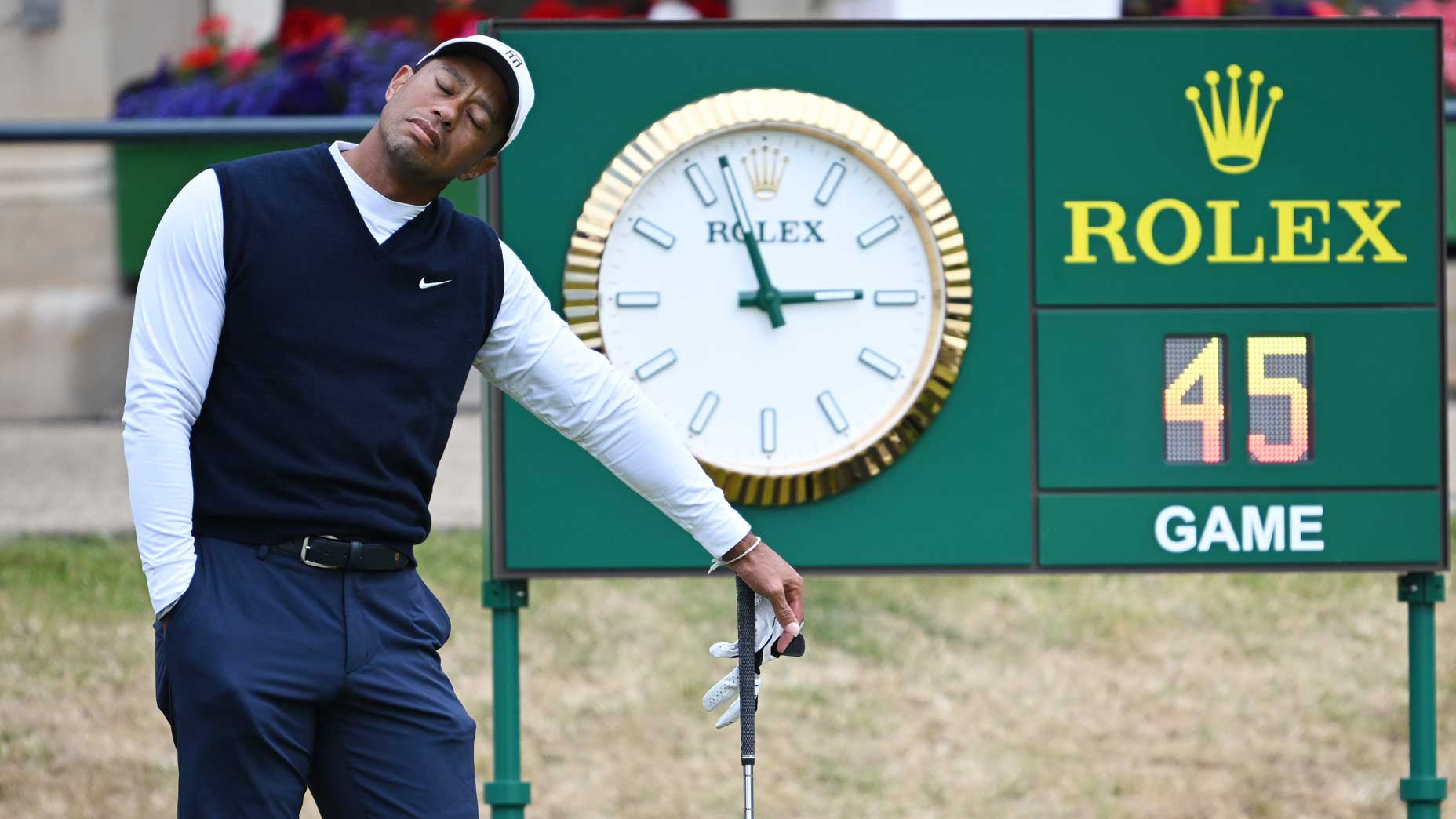
Tiger Woods stretched out during a wait on Thursday at St. Andrews' Old Course.
Getty Images
ST. ANDREWS, Scotland — Matthew Fitzpatrick shook his head as he came off the Old Course.
He wasn’t surprised that the round had been slow; his caddie Billy Foster had warned him it would. But still — six hours, 10 minutes?
“Yeah, it’s just a joke, isn’t it?” he said. “Like, six-hours-ten, this just shouldn’t be happening ever in golf.”
The Open Championship ground to a near-halt on Thursday afternoon, with a lethal combination of firm conditions, setup challenges and architectural inevitabilities contributing to long waits and a start-stop pace.
Max Homa estimated it took an hour just to play the par-5 14th hole.
“We got to 14, waited on the tee for a while,” Homa said. “And then [the group ahead] said we were going to hit up on them, and they let us drive. So we hit our drives. Then when we got up there, we waited 20 minutes for them to hit, which meant we had to wait another 20 after that for us to hit. It was very bizarre.”
Homa said the start-stop pace made it difficult to get into any sort of rhythm. Even by golf’s typical standards, this was particularly choppy.
“I guess we are used to waiting, it was just an insane amount of waiting,” he said. “I know what Matt [Fitzpatrick] is doing for vacation or ‘holiday,’ as he says. I guess I learned a lot about that.”
Their third, Tiger Woods, put it succinctly: “It was a long, slow day.”
So why was the Old Course so slow? Let’s run through the cocktail of conditions that got it to this point:
Firm conditions
You’ve heard plenty about St. Andrews’ rock-hard fairways and firm greens by now. The effect of said firmness is, naturally, that the ball goes very far. There are other reasons the ball goes very far, which include technology and training. Too far, some might argue! But this week the ground is a major contributing factor. At No. 14, Woods’ ball hit the ground at 312 yards and rolled out to 412, a full 100-yard dash.
That means longer waits from tees and fairways, because the group in front is just that much easier to reach. It also means that players’ shots can end up in a wider variety of places; a rolling golf ball is often up to no good, and gorse and pot bunkers await stray tee shots. After a long wait, players might find trouble, which will lead to further slow play trying to get out of trouble, which leads to more waiting. It’s a vicious cycle.
Drivable par-4s
There are a bunch of ’em, and they were extra-drivable on Thursday thanks to firm conditions and favorable winds. Bryson DeChambeau reached the edge of the par-4 7th, which was a rarity, but several other par-4s were gettable for the majority of players in the field. The 352-yard 9th, the 351-yard 12th and 356-yard 18th were all reachable with a well-placed tee shot. (DeChambeau hit 3-wood well over the 9th.)
Why do drivable par-4s take so long? The long shots take a long time because players have to wait for the group in front of them to clear the green. And the short shots take a long time because golfers are hardly laser-accurate from 350 yards. In other words, tee shots take a long time and everything else takes a long time, too, as players try to scramble for birdies and pars.
Reachable par-5s
Same reasoning as the reachable par-4s, but add an extra shot for extra chaos. St. Andrews has just two par-5s, No. 5 and No. 14, and both were reachable on Thursday. That means plenty of criss-crossed fairways, plenty of tricky up-and-downs and plenty of waiting.
Challenging short game shots
After the wind and the rain, St. Andrews’ greens are its greatest defense. Those greens and the areas around them were particularly spicy on Thursday, not because they were fast — they weren’t — but because they were firm, because the R&A leaned on some clever hole locations and because the green surrounds are no joke.
Viktor Hovland got stuck in two different pot bunkers that required head-scratching sideways extraction. Xander Schauffele was stuck on the road behind the 17th hole and wasn’t sure what to do — he eventually pulled out putter just because he’d seen someone else do that on TV. All over the course, players were deploying shots they’d never really tried before. That requires some extra time.
Overlapping holes
After hitting their tee shots at the par-3 11th, John Daly, Bryson DeChambeau and Cameron Tringale began to walk towards the green but were forced to stop. The golfers playing No. 7 were hitting their approach shots, and Daly and Co. had no path to get to their hole. Their wait didn’t take forever — two minutes or so — but it was enough time for Daly to finish a cigarette and enough time to further stagnate on-course action behind them.
This is an inevitability of the Old Course’s design; nearly every hole features a shared fairway and shared green. That’s a lot of overlapping and sharing. Sharing means patiently waiting. One group patiently waiting means a whole bunch of others get to do the same.
High stakes
It’s the 150th Open Championship and it’s held at St. Andrews. Rory McIlroy described it as the “Holy Grail of golf.” These guys aren’t exactly going to be rushing through their routines — even if we’d appreciate a little more urgency.
The solution
There isn’t one. Nothing simple, at least.
But there are a few things that can help. The first groups out on Friday played at expedited pace, with Mark Calcavecchia finishing out his final Open round in under four hours. That helps free up later groups. Some Friday morning rain also meant slightly softer conditions, which meant better ball control, lower scores and speedier play.
Inevitably, though, play will slow again on Friday afternoon. Perhaps not six hours, ten minutes. But slow nonetheless. Rory McIlroy says the best strategy is acceptance.
“It’s quite stop-start, but I think St Andrews is that way,” he said. “There’s a lot of crisscrossing and waiting on other greens and waiting on greens to clear because the drivable par-4s. So I think, especially the first two days when it’s the full field, it’s to be expected. It is what it is.
“Thankfully it speeds up over the weekend and two balls, and it gets moving a little bit more.”
In other words, the best solution to all this waiting is simple: Just wait for the weekend.

